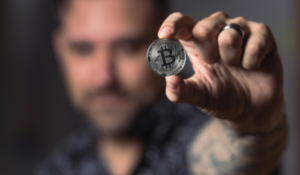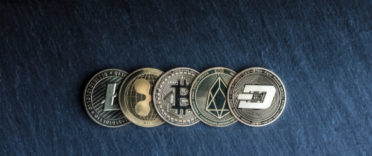
How to buy bitcoin in the UK
Before you jump in, it's crucial that you understand the risks associated with investing in bitcoin. Like all cryptocurrencies, bitcoin is extremely volatile and comes with the risk of losing just as much money as you might earn. Additionally, the Financial Conduct Authority (FCA) does not regulate most cryptoassets meaning you will not be protected by the Financial Services Compensation Scheme (FSCS) if a firm fails.
Investing in cryptocurrency should only be considered by experienced investors who understand the risks of investing in an unregulated product that offers no FSCS protection. Cryptocurrencies can be volatile, meaning investors risk getting back less than they originally invested.
Step 1 to buy bitcoin in the UK: Set up a cryptocurrency wallet
A cryptocurrency wallet is a secure place for you to store your public and private keys, which verify your identity so that you can interact with your bitcoins on the blockchain. You will need to set up a wallet as part of the process of purchasing any type of cryptocurrency.
There are four different types of wallet which you can choose from:
- A 'hot' software wallet downloaded onto your device.
- A 'hot' online wallet integrated to your chosen cryptocurrency exchange.
- A 'cold' external hard drive wallet that keeps your assets protected offline.
- A 'cold' wallet with your keys written down on a piece of paper.
Which type of wallet you choose is ultimately down to personal preference. Amateur investors may find an integrated online 'hot' wallet to be the most efficient and user-friendly, but these often require you to provide ID in order to set up, so those attracted to the anonymity of cryptocurrency may prefer an alternative. If you would prefer not to have an online wallet, you can opt to purchase a USB-type hard drive 'cold' wallet to store your keys externally, or simply note them on a piece of paper for safekeeping.
For more advice on the different types of cryptocurrency wallet, and which one would work best for you, make sure to visit our article 'What is a cryptocurrency wallet?'.
Step 2 to buy bitcoin in the UK: Choose an exchange platform
Once you have set up a wallet or chosen an exchange to store your digital assets, your next step is to select a bitcoin exchange provider to buy your bitcoin from. If you have opted not to set up your own wallet separately, then you may find it easiest to simply use the wallet provided by the exchange that you choose to trade on.
There are dozens of cryptocurrency exchanges to choose from – such as Coinbase, Gemini and Kraken – but each platform has its own unique features. The fees charged by different exchanges can vary widely by the type of cryptocurrency you are trading, the type of transaction you are undertaking, the type of payment method you are using, and where you are in the world.
Make sure to check the small print for your chosen exchange so you do not encounter any nasty hidden costs, and read our article on how cryptocurrencies are regulated to find out if the one you are considering is permitted to trade in the UK by the Financial Conduct Authority (FCA).
You can check out our list of the best cryptocurrency exchange platforms in the UK.
Step 3 to buy bitcoin in the UK: Create an account
Once you have decided on a cryptocurrency exchange to use, you'll need to register and complete security checks before you can purchase any bitcoin. The exact requirements will vary from one exchange to the next, but usually you must go to the exchange’s website homepage and click on 'register' to set up an account. Once you enter your email address and choose a password, the exchange will send you a confirmation email to authenticate your identity. After all of this has been verified, you will be taken to the dashboard page of your new cryptocurrency exchange account.
Step 4 to buy bitcoin in the UK: Complete security checks
From your cryptocurrency exchange dashboard, there will usually be a few more steps to complete before you can start buying bitcoin. These steps vary between different exchanges, but you will normally have to satisfying certain anti-money laundering criteria and the ‘Know-Your-Customer’ rules of the country in which your exchange is located.
Most exchange platforms will ask you to add your mobile phone number for two-factor authentication (2FA), which prevents anyone from accessing your account without both your account password and your mobile phone. For optimum security, 2FA requires you to enter your password and a short code sent directly to your mobile when you log in to your account or make any major transactions, to ensure that the activity on your account definitely belongs to you. Alternatively, you may be asked to use a third-party authenticator app that provided time-limited numerical codes.
Next, some exchanges will ask you to upload a photo or scan of your ID – such as your passport or driver’s license – although some may only ask for a photograph of your face. Others, though extremely rare, use an employee to conduct an ID check over your webcam.
Step 5 to buy bitcoin in the UK: Add a payment method
The final step in setting up your cryptocurrency exchange account is to add a payment method, which you will use to pay for your bitcoin purchases. You must add either a bank account, debit card, or credit card before you start buying anything. Keep in mind that adding a bank account is generally recommended for buying large amounts of bitcoin as the transfer fees tend to be lower – often less than 1% – while credit and debit cards are usually recommended for smaller purchases as they tend to incur fees of around 3-5% for each purchase. If you choose to pay with a card, you will have to supply bank account details if you want to withdraw your bitcoin at a later stage.
Step 6 to buy bitcoin in the UK: Make your bitcoin purchase
It's now time to purchase some bitcoin. Click on the ‘Buy’ button on your chosen exchange's dashboard and select the value of bitcoin that you wish to purchase. You will be asked to agree to some upfront costs, such as transaction fees, and you should make sure to read these details carefully so that you know exactly what you are being charged for. You can read more about the fees on Coinbase, Gemini and Kraken in our independent reviews. Once you are content with the terms, click on 'Buy' and wait for your transaction to be completed. The amount of bitcoin that you purchased should now be in your cryptocurrency wallet, but make sure to check that it has been updated just in case your transaction has been unsuccessful.
Step 7 to buy bitcoin in the UK: It's down to you
Now that you have successfully purchased some bitcoin of your own, your next steps are entirely up to you. You can opt to sit on your investment in the hope that bitcoin's value climbs and sell the currency itself later for a profit, or you can use your bitcoin to purchase products and services in the real world similarly to traditional money. Either way, it is wise to limit your bitcoin investment to a small proportion of your overall portfolio, so that you have some protection if (or, most likely, when) its value falls. For more information on expanding your investment portfolio, check out our article 'How much money do I need to start investing?' or our guide to the best investing apps in the UK.
Make sure that you do your research before committing any cash so that you are best prepared for the good and bad that comes with bitcoin trading. If you feel that your knowledge on the topic is a bit rusty, check out our articles:
- 'A beginner's guide to investing in bitcoin and cryptocurrency'
- 'How are cryptocurrencies regulated in the UK?'
- 'Cryptocurrency mining: What it is, how it works and how to mine bitcoin'
- 'Cryptocurrency: What are maker and taker fees?'
Do check the current and recent price of bitcoin before you make any purchases so that you can estimate its value and how this may change in the future. CoinDesk is a popular website which you can use to track bitcoin's (and several other cryptocurrencies) real-time price, as well as its recent performance, and browse various market statistics before you make your investment.





